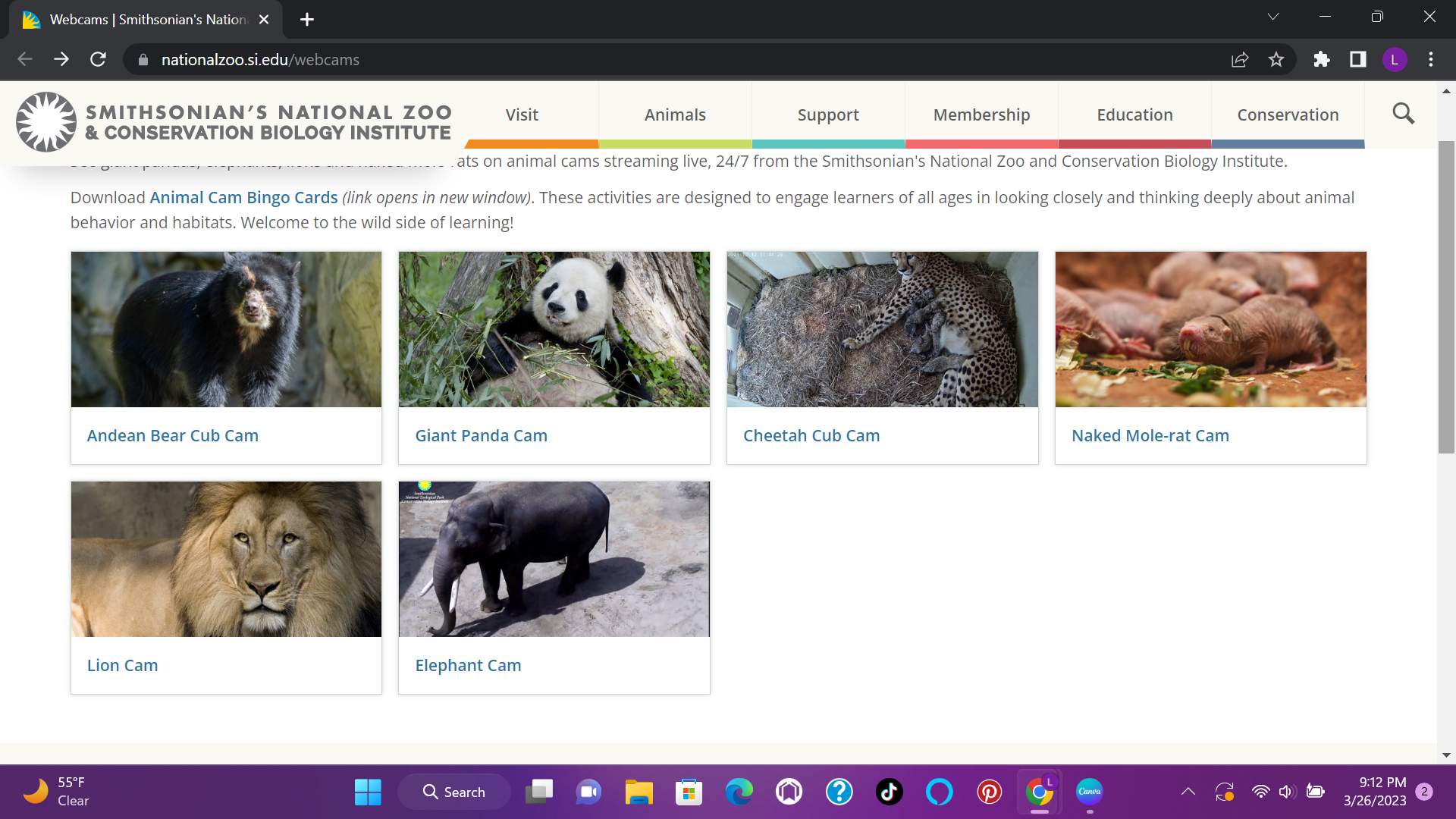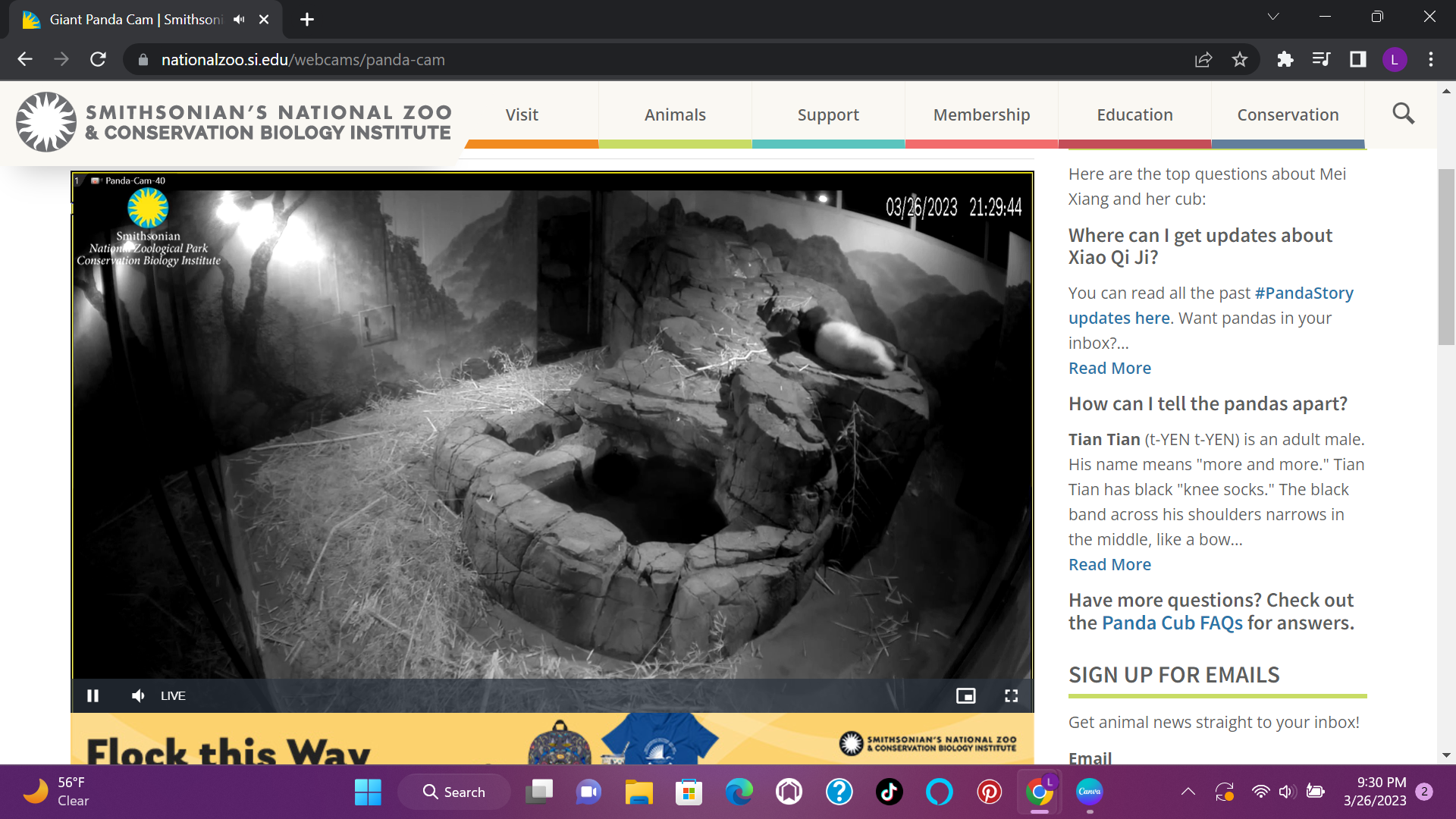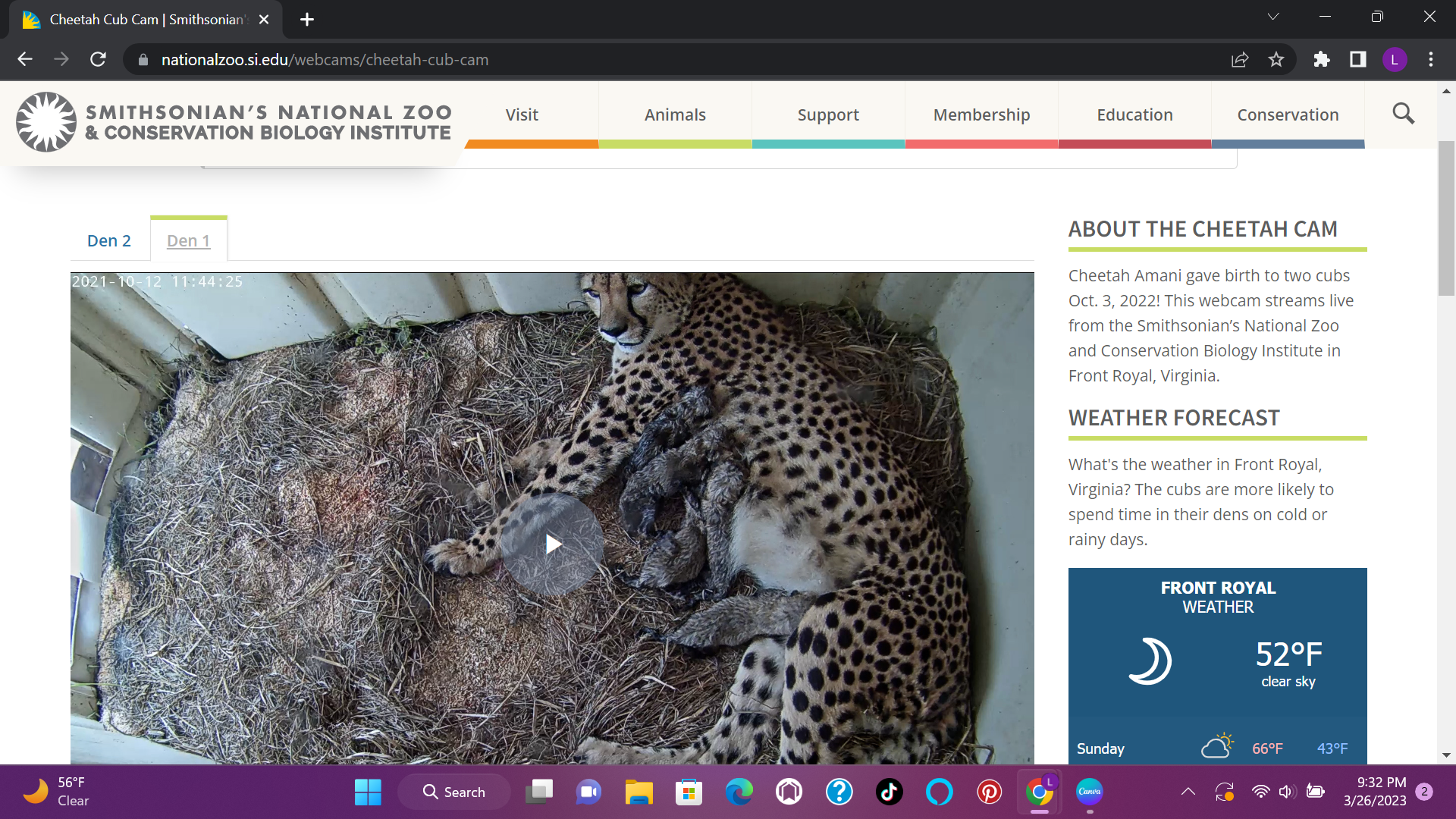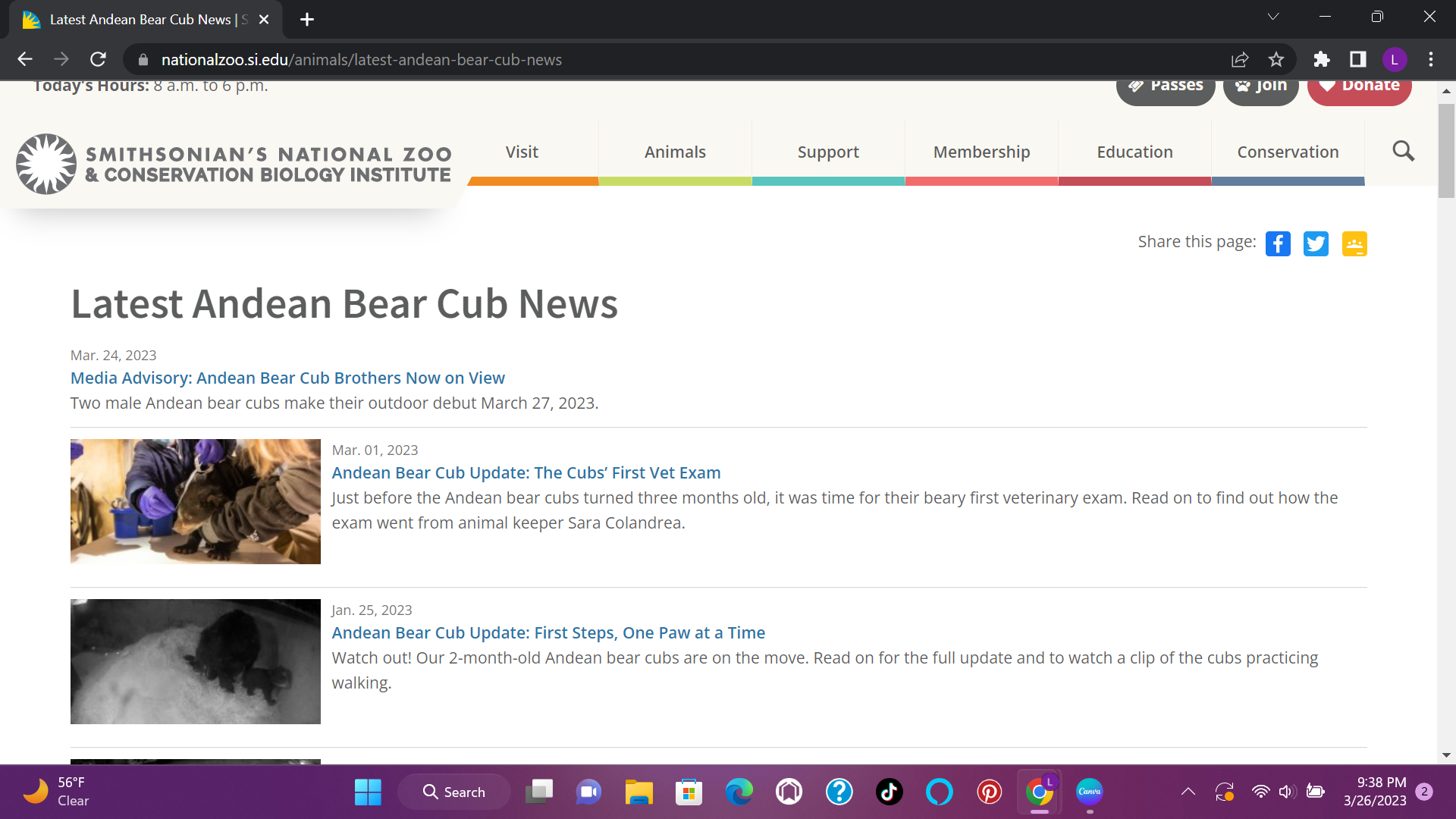For my virtual field trip, I visited the Smithsonian’s National Zoo & Conservation Biology Institute. These are practical ways of expanding a student’s knowledge through live observation of animals. There are different types of animals to choose from. Each animal has a live feed option as well as previously recorded clips. I observed a few for myself for an hour and will briefly describe what I saw in this blog post. I will also discuss the other resources that this website provides.

List of animals
- Andean Bear Cub
- Giant Panda
- Cheetah Cub
- Naked Mole-rat
- Lion
- Elephant
I first visited the “Giant Panda” live camera feed and observed the video for ten minutes. I watched this video during the day and at night. During the day, I witnessed the Giant Panda awake and eating some bamboo. It was cute and informative. I could use this in my classroom to observe the eating habits of the Giant Panda. However, when I watched the Giant Panda at night, there wasn’t any activity. The live streams may not make work as a homework assignment. Many of the animals were asleep or non-active at night time. On the other hand, educators could use the previously recorded videos as observational at-home activities.

Another feature that I noticed after switching to another animal, the “Cheetah Cub,” is two available camera views to see the animals. These views allow students to observe from different angles. Students can also learn about perspective in the classroom. When an individual can not find something, it helps to change the angle or “point-of-view.”

When I visited the “Andean Bear Cub” link, I found past videos for at-home instructions or in-class activities if the live stream is unavailable. The videos are on most of the animal pages. They allow access to records of these animals and articles about updates about them.

This website allows students to explore a different part of the world from the comfort of their classroom. They can make live observations and view these animals from different perspectives. There are many activities that students can participate in using this virtual field trip.
Ideas for uses in the classroom.
- Group observation activities.
- Science research reports.
- Homework activities.
- Fun classroom breaks.
- Science classroom activities.

In conclusion, this is a beneficial learning tool for the classroom and has many different resources to explore. It will help strengthen students’ observation skills and open doors to understanding the world around them. There was so much more that I did not explore that I will. I will also be using this in my future classroom.
2 responses to “Smithsonian’s National Zoo & Conservation Biology Institute”
Hi! This is a very good blog post. It is informative to those who have not seen the option to do a virtual field trip. I will definitely be using this tool in my classroom to teach my students a couple of things.
Camille
Hello! I found this post to be very interesting. I really liked how there are different camera feeds that show all of the animals like you are there with them. I think this is defiantly something that students would love to use in the classroom in order to learn more about animals.